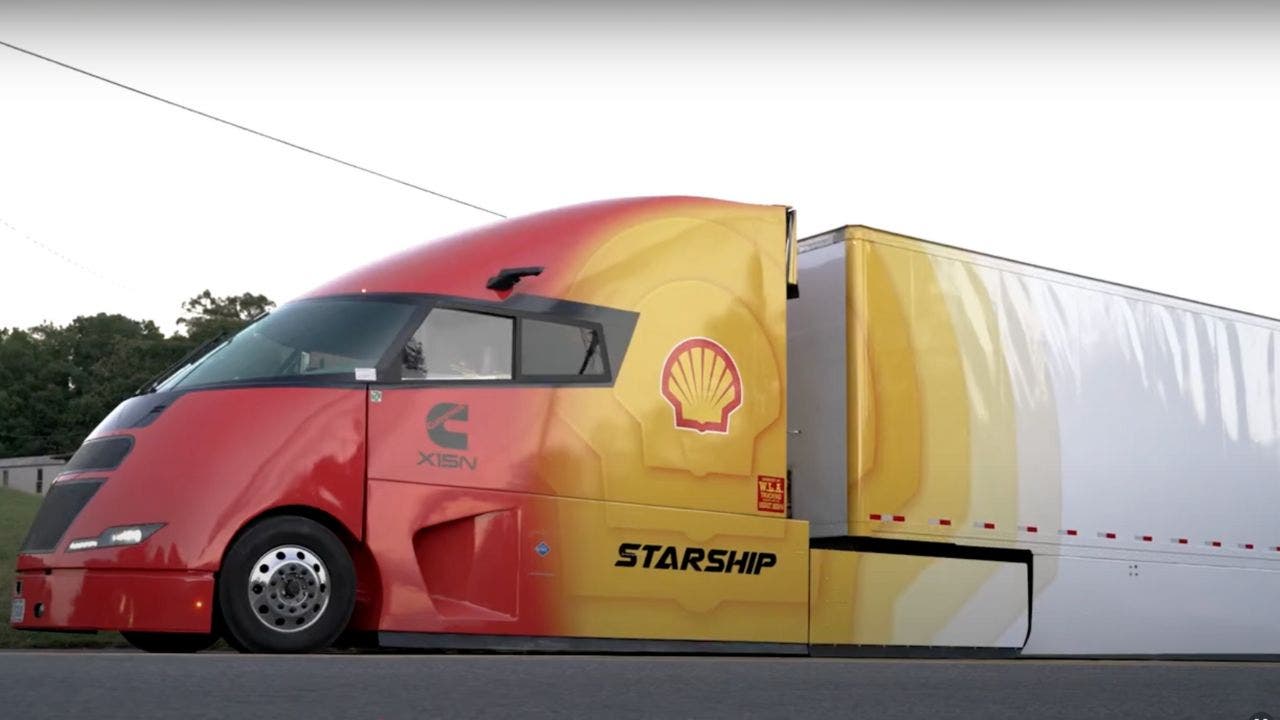At this point, it’s pretty clear what Donald Trump wants from Mark Zuckerberg. But what does Zuckerberg, who has now gone to Mar-a-Lago twice since the November election, want from the President-elect?
Technology
Hollywood hijacked: The AI takeover of Tinseltown’s films to fake out Americans

If you’re a fan who counts down the days to upcoming movie releases for your favorite characters, you may also be a big fan of movie trailers. So, you may be quite angry if you believe you’ve stumbled on a secret movie trailer on YouTube that looks like the real thing, only to discover artificial intelligence duped you.
Although people have been creating fake movie trailers for quite a while and releasing them on platforms like YouTube, readily available artificial intelligence apps make the process far easier. A recent fake AI movie trailer for the James Bond movie franchise – that appeared to show Henry Cavill as the new Bond character – became quite popular, generating almost 4 million views in two weeks.
However, the trailer was a fake from KH Studio. Judging from the comments on YouTube, its quality was more than good enough to dupe many viewers who thought they were viewing the real thing. Because it generated so many views, other creators are sure to look to do something similar.
CLICK TO GET KURT’S FREE CYBERGUY NEWSLETTER WITH SECURITY ALERTS, QUICK VIDEO TIPS, TECH REVIEWS AND EASY HOW-TO’S TO MAKE YOU SMARTER
Movie screen in a movie theater (Kurt “CyberGuy” Knutsson)
Why fake AI movie trailers scare Hollywood
AI technology played a key role in the recent labor talks in Hollywood between studios and the actor’s and writer’s unions. The union members wanted guarantees about how studios would use AI that would protect their jobs and creative rights.
The fake movie trailers highlight some of the biggest fears of the creatives in Hollywood. They fear filmmakers could upload existing material into AI software, allowing the AI to generate new material without needing writers or actors. Perhaps AI software could even reboot original TV shows and movies from decades ago with images of the actors as they looked in their younger days.
Those generating fake AI movie trailers currently don’t have a film studio’s financial resources or computing power. Yet, they are already fooling some people into believing the trailers are real. Without safeguards in place, those studios could potentially use their significant resources in the near future to generate AI content that simply isn’t distinguishable from the real thing.

Clapperboard used in filmmaking (Kurt “CyberGuy” Knutsson)
MORE: AI’S IMPACT ON HOLLYWOOD AMID ‘BARBENHEIMER’ EPIC FRENZY
The proliferation of fake movie trailers on YouTube
You don’t have to search hard online for advice and step-by-step instructions for creating fake movie trailers. Such instructions include information on mimicking the audio, graphics and video to make the trailer look realistic. They can even help you create a fictional description to accompany the YouTube upload.
Those who create these trailers often are simply looking for ways to show off their creativity – while generating plenty of views for potential monetization.
One creator well-known for these types of movies is Abandoned Films on YouTube. This creator uses a combination of AI and Photoshop to generate fake trailers for modern television shows and films that feature camera technology from the 1950s and 1960s.
Another YouTube creator, Curious Refuge, uses AI to generate movie trailers as if they’re filmed in the style of American filmmaker Wes Anderson.

Illustration of individual photographic images (Kurt “CyberGuy” Knutsson)
MORE: REAL OR FAKE? AI PRODUCT REVIEWS ARE MAKING IT IMPOSSIBLE TO KNOW THE DIFFERENCE
Protecting creativity and authenticity
As AI advances, the entertainment industry must work closely with technology companies to establish robust safeguards. This may involve developing digital watermarking techniques, improving trailer authentication processes, and ensuring that AI-generated content is clearly labeled. Preserving the integrity of the moviegoing experience will be crucial in this rapidly evolving landscape.
MORE: ARE AI DEEPFAKES THE END OF ACTING AS WE KNOW IT?
Kurt’s key takeaways
No one likes to have the wool pulled over their eyes, especially Hollywood stars. Whether you enjoy the creativity found in fake movie trailers generated with AI or you agree with users on Reddit’s YouTube forum who absolutely hate them, they aren’t going to disappear any time soon. With Hollywood concerned about how AI may affect the entertainment industry, these fake AI movie trailers will surely receive increased attention as they become more prevalent and look more realistic.
Do you believe fake AI movie trailers are something akin to fan fiction? Or do such trailers represent a violation of the rights of the creator of the original works? Let us know by writing us at Cyberguy.com/Contact.
For more of my tech tips and security alerts, subscribe to my free CyberGuy Report Newsletter by heading to Cyberguy.com/Newsletter.
Ask Kurt a question or let us know what stories you’d like us to cover.
Answers to the most asked CyberGuy questions:
Copyright 2024 CyberGuy.com. All rights reserved.

Technology
Mastodon’s CEO and creator is handing control to a new nonprofit organization
/cdn.vox-cdn.com/uploads/chorus_asset/file/25050349/HT053_MASTODON_CVirginia.jpg)
Decentralized social network Mastodon has announced plans to transfer its ownership to a new nonprofit entity. Ownership of Mastodon will move away from the control of CEO Eugen Rochko, in contrast to the power exerted by other social media CEOs like Meta cofounder Mark Zuckerberg and X owner Elon Musk.
“Simply, we are going to transfer ownership of key Mastodon ecosystem and platform components to a new nonprofit organization,” Mastodon says in a blog post, “affirming the intent that Mastodon should not be owned or controlled by a single individual.”
Rochko, who founded Mastodon in 2016, will take on a new role with a focus on product strategy while ownership moves to a new not-for-profit entity based somewhere in Europe, with the exact location still to be finalized. The organization is currently headquartered in Germany, where it was a nonprofit until its charitable status was stripped last year. This move is a way of restoring Rochko’s original intent for Mastodon.
“When founder Eugen Rochko started working on Mastodon, his focus was on creating the code and conditions for the kind of social media he envisioned,” Mastodon says. “The legal setup was a means to an end, a quick fix to allow him to continue operations. From the start, he declared that Mastodon would not be for sale and would be free of the control of a single wealthy individual, and he could ensure that because he was the person in control, the only ultimate decision-maker.”
In the short term, nothing should change for users. Mastodon will continue to host the mastodon.social and mastodon.online servers and support its federated network. Routine code development and bug fixes are ongoing, though the announcement adds that “changes are definitely in the pipeline.”
“Our core mission remains the same: to create the tools and digital spaces where people can build authentic, constructive online communities free from ads, data exploitation, manipulative algorithms or corporate monopolies,” Mastodon says.
Technology
The future of trucking rolls forward in Shell's experimental big rig

The Shell Starship Initiative has been on an interesting journey since its inception in 2018, with a mission to redefine energy efficiency in the commercial trucking sector. Starting with diesel engines, the first two versions of the Starship made impressive strides in fuel efficiency, but now with the introduction of the Starship 3.0, we’re witnessing a remarkable shift towards sustainability. This latest iteration features the innovative Cummins X15N natural gas engine, which not only enhances performance but also significantly reduces emissions.
I’M GIVING AWAY THE LATEST & GREATEST AIRPODS PRO 2
Enter the giveaway by signing up for my free newsletter.
Starship 3.0 (Shell) (Kurt “CyberGuy” Knutsson)
Evolution of the Starship initiative
The Shell Starship Initiative began with a clear goal: to set new benchmarks for energy efficiency in commercial trucking. The first two versions of the Starship were powered by diesel engines, achieving notable fuel efficiencies compared to industry standards. However, the introduction of the Cummins X15N natural gas engine in the Starship 3.0 represents a pivotal shift away from diesel, addressing both environmental concerns and operational efficiency.
The X15N engine, launched in 2024, is designed specifically for heavy-duty applications and overcomes previous limitations associated with natural gas as a fuel source. It provides similar power outputs to diesel engines but does so with enhanced fuel efficiency and significantly lower emissions. This is particularly important as the trucking industry faces increasing pressure to meet stricter environmental regulations.

Starship 3.0 (Shell) (Kurt “CyberGuy” Knutsson)
YOU WON’T BELIEVE HOW FAR VOLVO’S NEW ELECTRIC SEMI-TRUCK GOES ON A SINGLE CHARGE
Key features of Starship 3.0
The Starship 3.0 is packed with cutting-edge features that set it apart in the world of trucking. From its innovative natural gas power train to its sleek aerodynamic design, every aspect of this vehicle has been meticulously crafted to enhance efficiency and reduce emissions. Let’s dive into some of the standout features that make the Starship 3.0 a game-changer for the industry.
Natural gas power train: The switch to the Cummins X15N engine allows the Starship 3.0 to operate on various forms of natural gas, including renewable natural gas. This adaptability not only enhances its eco-friendliness but also positions it as a practical option for fleets looking to transition away from traditional fuels.
Weight reduction: The new engine is approximately 500 pounds lighter than its diesel counterpart, which increases the potential freight-carrying capacity of the truck. This weight reduction is complemented by other lightweight materials used in the truck’s construction, contributing to an impressive ton-miles per gallon efficiency of 183, compared to an industry average of 72.
Aerodynamic design: The Starship 3.0 features a sleek design with curved edges and optimized aerodynamics that reduce wind resistance. Additional enhancements like low rolling resistance tires and integrated aerodynamic panels further contribute to its efficiency.
Advanced lubricants: Shell has developed specialized lubricants tailored for the higher temperatures generated by natural gas engines. The truck uses Shell Rotella NG Plus SAE 5W-30 synthetic oil, formulated specifically for this purpose, alongside advanced transmission lubricants that improve overall performance.
Real-world testing: The input from experienced truck drivers, such as brothers Brian and Eric Rector, has been invaluable in refining the Starship’s design and functionality. Their hands-on experience with all three iterations of the truck has provided critical data that informs ongoing improvements.

Starship 3.0 (Shell) (Kurt “CyberGuy” Knutsson)
BULLET TRAIN-LOOKING GIANT SEMI TRUCK TO HIT US HIGHWAYS
Performance metrics
The performance metrics achieved by the Starship 3.0 are impressive. It surpassed its predecessors with a freight ton efficiency that is 2.542 times better on a ton-miles per gallon basis, while also achieving an average fuel consumption of 9 mpg (diesel gallon equivalent) while hauling an industry maximum load of 80,000 pounds. Additionally, the emissions reductions associated with using renewable natural gas further enhance its environmental credentials, making it a viable option for fleets aiming for sustainability.

Starship 3.0 (Shell) (Kurt “CyberGuy” Knutsson)
SUBSCRIBE TO KURT’S YOUTUBE CHANNEL FOR QUICK VIDEO TIPS ON HOW TO WORK ALL OF YOUR TECH DEVICES
Kurt’s key takeaways
The Starship 3.0, with its innovative natural gas engine and impressive performance metrics, showcases how technology can transform the industry while addressing environmental concerns. This initiative not only sets new benchmarks for energy efficiency but also offers a practical roadmap for fleets looking to reduce their carbon footprint.
Do you believe that transitioning to natural gas and other eco-friendly technologies is the key to addressing environmental challenges, or do you think there are other solutions that should be explored? Let us know what you think by writing us at Cyberguy.com/Contact.
For more of my tech tips and security alerts, subscribe to my free CyberGuy Report Newsletter by heading to Cyberguy.com/Newsletter.
Ask Kurt a question or let us know what stories you’d like us to cover.
Follow Kurt on his social channels:
Answers to the most asked CyberGuy questions: New from Kurt:
Copyright 2024 CyberGuy.com. All rights reserved.
Technology
What does Mark Zuckerberg want from Donald Trump?
/cdn.vox-cdn.com/uploads/chorus_asset/file/25822588/STK169_ZUCKERBERG_MAGA_STKS491_CVIRGINIA_B.jpg)
That’s the question I’ve been asking sources in and around Meta over the last several days. They all described Meta’s relationship with the outgoing Biden administration as incredibly hostile. It’s safe to assume that Zuckerberg wants a reset for the MAGA regime, especially since Trump threatened not that long ago to imprison him for life.
In Trump’s America, removing tampons from the mens’ restrooms on Meta’s campuses, — a real thing that just happened — is as much a business decision as a political one. Destroying ‘woke’ ideology is a key pillar of Trump’s stated mandate. Others who know they need to play the game, like Amazon, are also starting to fall in line. Even still, Zuckerberg is transforming Meta for this new political reality at a speed that’s unusual for a company of its size and influence. Founder mode.
In his conversation with Joe Rogan and his video on Instagram, Zuckerberg shares a laundry list of issues that Trump could help him with: fighting other countries that are ratcheting up their policing of his platforms, stopping Apple from dictating how he builds mobile apps and smart glasses (the latter is increasingly important to Meta’s future), and, perhaps most importantly, keeping domestic AI regulation from slowing his efforts to crush OpenAI. Elon Musk has bought Trump’s ear. But the more time Zuckerberg spends in Mar-a-Lago, the more Sam Altman and Tim Cook should be worried.
Then there’s the US government’s case to break up Meta that’s set to go to trial in a few months. After the blur that was the last four years, it’s easy to forget that this lawsuit was filed at the end of Trump’s first term by a Republican FTC chair, not Lina Khan…
Most of the headline reactions from the past week have focused on Zuckerberg’s decision to end Meta’s third-party fact check program. It was a convenient scapegoat for company executives that, frankly, never lived up to the goal of bringing more neutrality to Facebook and Instagram. The Community Notes alternative Meta is cribbing from X was not on the product roadmap before this week, so it will probably be awhile before everyone sees it in the wild.
The announcement that US moderators would be moved from California to Texas is perhaps the most cynical of them all; talk to anyone who knows and they’ll tell you the vast majority of moderators are already based in Austin.
The hateful speech that is now allowed on Meta’s is eye-popping on its face and will be deserving of more scrutiny in the coming weeks. The decision to start recommending political content again is a 180-degree turn for Zuckerberg. But insiders believe that the most impactful change for users of Meta’s apps will be the softening of its systems that remove content for potential policy violations.
Out of all the announcements Meta made last week, this is the one I believe is the least connected to Trump. Meta execs have been signaling for a while that they know they are mistakenly removing too much content that doesn’t actually break the rules; I’m told it’s one of, if not the, biggest complaint in user surveys. If done correctly, dialing back on moderation mistakes may be the only thing Zuckerberg announced that makes everyone happy.
Elsewhere
- CES is for dealmaking now: Each year, the official CES show — the sprawling show floor and flashy keynotes — feels more like an advertising exercise and no longer a place to launch real products. Most of the energy has moved to private meeting rooms and happy hours at the Wynn, Aria, and Cosmopolitan, where tech execs are schmoozing CMOs and getting deals done with partners all week. At this shadow CES, everyone seems to agree that the show is more alive than ever. Booths on the show floor have become marketing tools to show clients before you take them to a steak dinner. The challenge for the organizers of CES will be figuring out how to bridge the growing influence of this part of the show with their current business model of charging people to walk around booths filled with smart toasters and concept cars.
- TikTok may just get banned: Imagine an alternate world in which the Chinese government is about to ban Instagram from operating in the country and Mark Zuckerberg is in hiding. That’s the situation with ByteDance and its founder Zhang Yiming, who stepped down from the CEO role after the last US ban attempt but still controls the company. He let TikTok be banned in India and seemingly has no interest in the app surviving this time, so why wouldn’t he let the same thing happen again?
- Google and OpenAI flick at what’s next: Google’s DeepMind unit is starting “an ambitious project to build generative models that simulate the physical world,” which it believes “is on the critical path to artificial general intelligence.” Meanwhile, OpenAI is returning to its early roots by starting a “general-purpose robotics” team that will build hardware and push “towards AGI-level intelligence in dynamic, real-world settings.” We may have hit a scaling wall on text data but the big labs clearly see an opportunity in 3D. (See also what Nvidia announced last week.)
- Other headlines you may have missed: Tencent (a large investor in Epic Games, Snap, and US tech companies) was put on the Pentagon’s blacklist for being allegedly under the influence of the Chinese military. Tim Cook’s total compensation rose 18 percent last year to $74.6 million. Elon Musk is hosting an inauguration party for Trump in DC with Uber and The Free Press. Sam Altman’s sister filed a sexual abuse lawsuit against him.
Job board
Some recent, noteworthy job changes in the tech world:
- A bunch of changes at Meta: UFC CEO Dana White, Exor CEO John Elkann, and Charlie Songhurst joined the board. Joel Kaplan is running policy and comms now. After a stint at Google, I’m told Michael Levinson is coming back as VP of product for the Integrity org. (Good luck!) Head of civil rights, Roy Austin, is leaving. And former DEI chief Maxine Williams is now head of “accessibility and engagement.”
- Elon Musk’s X named a couple of new leaders: Romina Khananisho is the new head of government affairs and John Nitti is head of “ad innovation.”
- Calista Redmon joined Nvidia as VP of “global AI initiatives,” where she’ll “drive adoption of the NVIDIA platform for national and regional AI initiatives.”
- Sophia Dominguez, Snap’s director of AR platform, is leaving.
More links
If you haven’t already, don’t forget to subscribe to The Verge, which includes unlimited access to Command Line, all of our reporting, and an improved ad experience on the web.
As always, I want to hear from you, especially if you work at Meta. Respond here, and I’ll get back to you, or ping me securely on Signal.
-

 Politics1 week ago
Politics1 week agoWho Are the Recipients of the Presidential Medal of Freedom?
-

 Health1 week ago
Health1 week agoOzempic ‘microdosing’ is the new weight-loss trend: Should you try it?
-
/cdn.vox-cdn.com/uploads/chorus_asset/file/25822586/STK169_ZUCKERBERG_MAGA_STKS491_CVIRGINIA_A.jpg)
/cdn.vox-cdn.com/uploads/chorus_asset/file/25822586/STK169_ZUCKERBERG_MAGA_STKS491_CVIRGINIA_A.jpg) Technology4 days ago
Technology4 days agoMeta is highlighting a splintering global approach to online speech
-

 News1 week ago
News1 week agoSeeking to heal the country, Jimmy Carter pardoned men who evaded the Vietnam War draft
-

 Science2 days ago
Science2 days agoMetro will offer free rides in L.A. through Sunday due to fires
-

 News1 week ago
News1 week agoTrump Has Reeled in More Than $200 Million Since Election Day
-

 Movie Reviews6 days ago
Movie Reviews6 days ago‘How to Make Millions Before Grandma Dies’ Review: Thai Oscar Entry Is a Disarmingly Sentimental Tear-Jerker
-
/cdn.vox-cdn.com/uploads/chorus_asset/file/25821992/videoframe_720397.png)
/cdn.vox-cdn.com/uploads/chorus_asset/file/25821992/videoframe_720397.png) Technology6 days ago
Technology6 days agoLas Vegas police release ChatGPT logs from the suspect in the Cybertruck explosion














